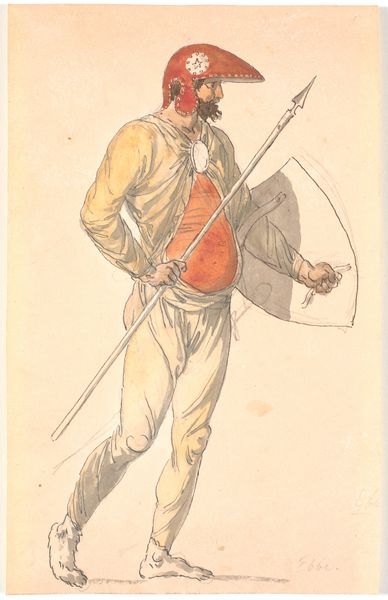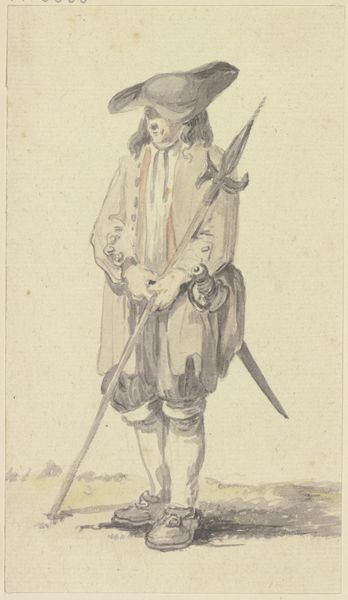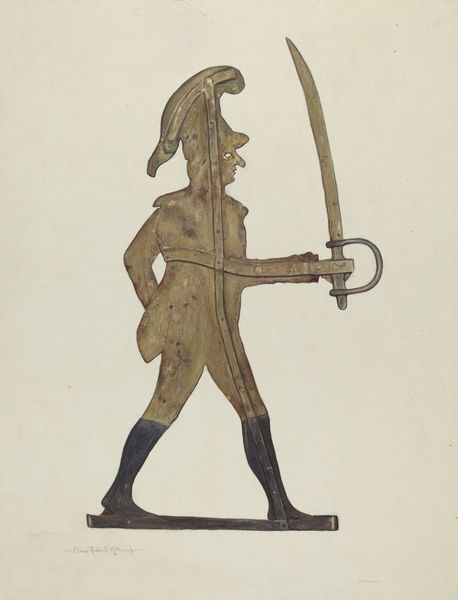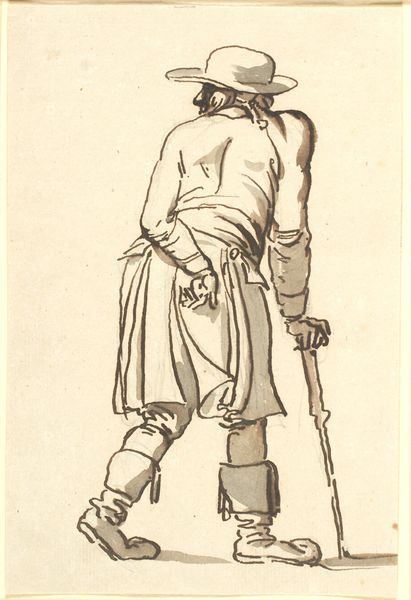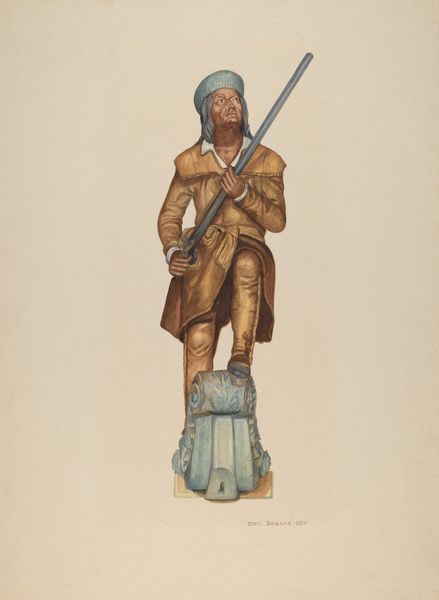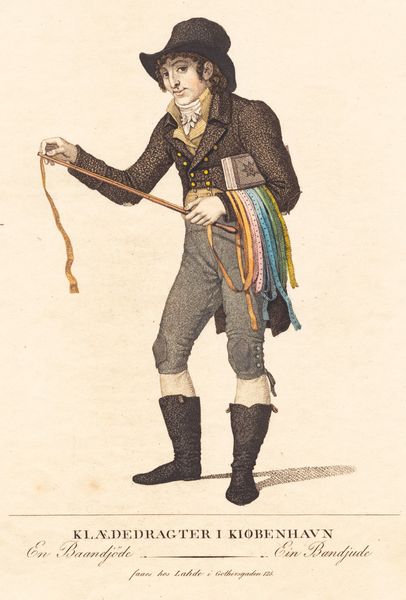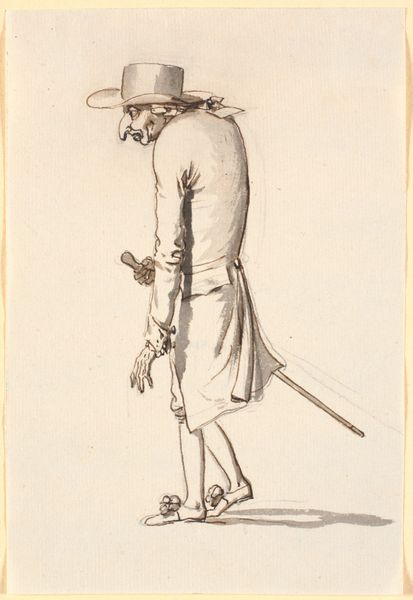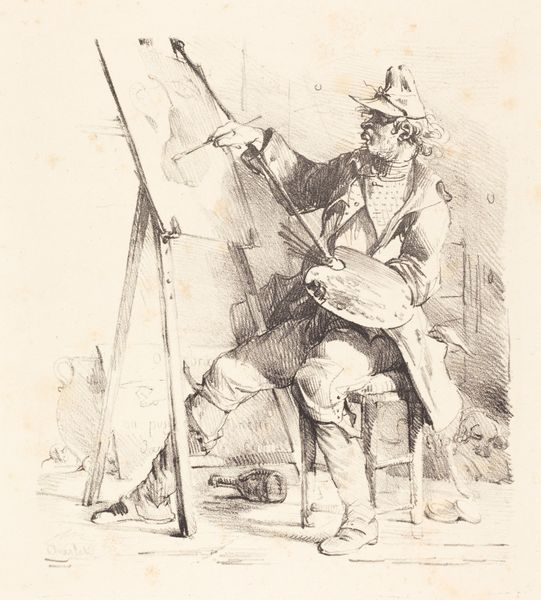
Soldaat met baard en geweer, tulband op het hoofd, rode broek en ransel op de rug 1840 - 1880
0:00
0:00
Dimensions: height 180 mm, width 180 mm
Copyright: Rijks Museum: Open Domain
Curator: We're now looking at "Soldaat met baard en geweer, tulband op het hoofd, rode broek en ransel op de rug," which translates to "Soldier with beard and rifle, turban on his head, red trousers and rucksack on his back." This drawing, created between 1840 and 1880, is currently housed here at the Rijksmuseum. It’s attributed to Johannes Tavenraat. Editor: It's striking! The color palette, that bright red against the softer blues and greens, immediately gives a sense of, I don't know, a slightly romanticized military life? Perhaps even slightly theatrical. Curator: That's an interesting point. The Romanticism style tag fits in many ways, with the possible exotification of the soldier through his turban, but I read the painting through a more intersectional lens, the painting begs the questions what the historical, social and perhaps colonial power structures in which an artist such as Tavenraat created work like this? The red could be viewed as an aggressive representation, and also what of the subject themselves. Editor: I understand your concerns about power dynamics but think the color choice contributes more than you state here, while I think this work presents us with several cultural cues worth mentioning; the turban is clearly important. Historically and even psychologically, he seems set apart. Curator: Indeed! He is immediately marked as “other,” especially within the context of European art from that era. The way the artist chooses to depict his clothing can perpetuate stereotypes regarding foreign mercenaries, an early form of propaganda perhaps? And it appears he's positioned almost as if to go on parade to be seen. Editor: I would tend to disagree. But to your earlier point on stereotypes and dress, the rucksack is something almost universally recognized even today which almost bridges the cultural gap for a modern audience. Also he is armed, the symbolism is obvious. Curator: Yes, the rifle clearly communicates power and possible intent for domination, of a colonial project. But to me, this piece presents more questions than answers on those grounds. Editor: Ultimately, "Soldaat met baard en geweer," speaks to how deeply ingrained cultural symbols become. Thanks for framing it in those more critical terms, though. Curator: Absolutely! The complexities are really the points where such works become interesting.
Comments
No comments
Be the first to comment and join the conversation on the ultimate creative platform.


